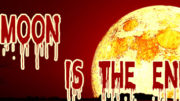Let’s talk about a commonly held belief that a majority of evangelicals adhere to, but is based on a faulty interpretation of one verse in the Bible.
That belief is termed “The Rapture” and the one verse it is predicated upon is 1 Thessalonians 4:17.
For years, I, as an evangelical Christian, too believed in the Rapture; that is, until I started looking much closer at the whole concept and how the Thessalonian reference had been skewed to fit into a theological paradigm known as Dispensationalism, rather than upon a consistent interpretive analysis of the Bible.
I, like so many, believed that just prior to the commencement of the Great Tribulation mentioned by Jesus in Matthew 24:21 (see also Rev. 7:14), the Christian church would be “raptured” out of the world to meet Jesus in the air and thereby miss all the catastrophic judgments that were to be poured out upon an impenitent world of antichrist worshipers.
No one ever divulged just where all the Christians were going to be reside for seven years after they first met Jesus.
It was assumed in heaven, but there was no definitive statement.
Then, after God was finished punishing all the rebels on earth, Jesus and the raptured saints would return to earth to reign for a thousand years in the New Jerusalem.
The problem, though, is that what the apostle Paul mentions by way of rapture (Gr. ἁρπαγησόμεθα) in 1 Thessalonians has nothing to do with the Dispensationalist misinterpretation of that verse.
Rapture Context
What had happened to the deceased is the context leading up the rapture statement.
Paul wrote, “But we do not want you to be uninformed, brothers, about those who are asleep, that you many not grieve as others do who have no hope” (1 Thess 4:13).
Being asleep is a euphemism for someone who had died and it apparently worried those Thessalonian believers that upon decease, that was it!
There was no hope beyond the grave!
According to Hendriksen, the Greeks and Romans taught that once the soul leaves the body, “It enters Hades, a very dismal realm of ‘shades.’ Compared to its former life on the sunny earth, sunless Hades where the dead bemoan their existence, failed to inspire any comfort.”
Indeed, Jesus taught that Hades was a place of intense loneliness, unquenchable flames, and extreme torment (see the story of the rich man and Lazarus in Luke 16:19:30).
Paul dispels this notion of doom and gloom for the deceased by alluding to the death and resurrection of Jesus, which provides a completely different outlook on death and the afterlife than the pagan religions had to offer.
He wrote, “For since we believe that Jesus died and rose again, even so, through Jesus, God will bring with him those who have fallen asleep. For this we declare to you by a word from the Lord, that we who are alive, who are left until the coming of the Lord, will not precede those who have fallen asleep” (1 Thess 4:14-15).
In other words, Christians believe that they will be with Jesus in the afterlife, not in some dingy dungeon of existence where the deceased loathe their lonely existence.
The Second Coming
Then, at the “coming of the Lord,” or Jesus’ Second Coming, all persons who are followers of Jesus, will return with him, with the deceased preceding those who are still alive on the earth!
The Second Coming is something that is often overlooked in this passage, as it follows the Great Tribulation; it does not precede it.
Hence, the rapture follows the Great Tribulation too, since it is linked to the Second Coming.
In Matthew’s gospel we read,
Immediately after the tribulation of those days the sun will be darkened, the moon will not give its light, and the stars will fall from heaven, and the powers of the heavens will be shaken. Then will appear in heaven the sign of the Son of Man, and then all the tribes of the earth will mourn, and they will see the Son of Man coming on the clouds of heaven will power and great glory (Matt. 24:29-30).
Matthew is corroborated by what Paul next tells the Thessalonians: “For the Lord himself will descend from heaven with a cry of command, with the voice of an archangel, and with the sound of the trumpet of God” (1 Thess 4:16).
Jesus’ Second Coming will commence with regal and worldwide fanfare; everyone will see and hear his return.
“For as the lightning comes from the east and shines as far as the west, so will be the coming of the Son of Man,” wrote Matthew (24:27).
Conclusion
When Dispensationalists speak of the Rapture, it is regularly clouded in mystery, as if all of the sudden millions of Christians suddenly disappear without a trace, even though it is directly associated with Jesus’ Second Coming, which is an overt display of God’s majesty and glory.
This becomes evident when we look at the only verse the Dispensationalists reference to defend their understanding of the Rapture event, 1 Thessalonians 4:17.
Paul wrote, “Then we who are alive, who are left, will be caught up [i.e. raptured] together with them in the clouds to meet the Lord in the air, and so we will always be with the Lord.”
Again, since the immediate context is dealing with the destiny of the deceased, and not the Great Tribulation, then Paul is reassuring his readers that not only are their souls in good company with the Lord, but that upon His return, their physically glorified bodies will be rejoined with them, while those who are alive will be translated from their current state of mortality into immortality (1 Cor. 15:50-53).
It is that message that would lead Paul to conclude the “Rapture” passage with, “Therefore encourage one another with these words” (1 Thess 4:18).
To die is not the end for the Christian, whether the person has died as a Christian or is still alive as one.
Instead, it is consummation of a confession that began when God called the Christian to a “new life” found in Jesus Christ, who is alive today, and poised to return at the last trumpet to “rapture” both the deceased and the living to be with him forever.




